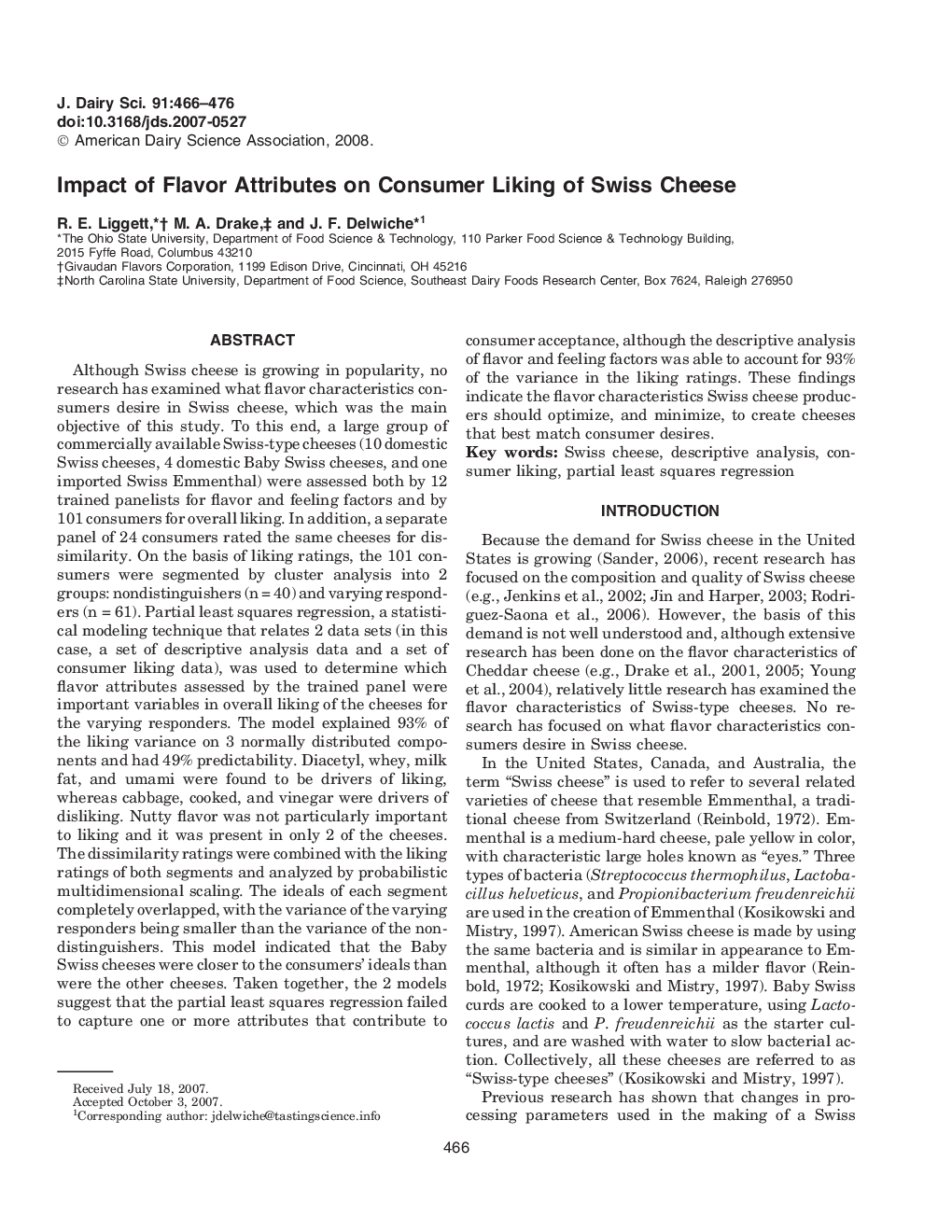| کد مقاله | کد نشریه | سال انتشار | مقاله انگلیسی | نسخه تمام متن |
|---|---|---|---|---|
| 2440386 | 1108117 | 2008 | 11 صفحه PDF | دانلود رایگان |
عنوان انگلیسی مقاله ISI
Impact of Flavor Attributes on Consumer Liking of Swiss Cheese
دانلود مقاله + سفارش ترجمه
دانلود مقاله ISI انگلیسی
رایگان برای ایرانیان
کلمات کلیدی
موضوعات مرتبط
علوم زیستی و بیوفناوری
علوم کشاورزی و بیولوژیک
علوم دامی و جانورشناسی
پیش نمایش صفحه اول مقاله

چکیده انگلیسی
Although Swiss cheese is growing in popularity, no research has examined what flavor characteristics consumers desire in Swiss cheese, which was the main objective of this study. To this end, a large group of commercially available Swiss-type cheeses (10 domestic Swiss cheeses, 4 domestic Baby Swiss cheeses, and one imported Swiss Emmenthal) were assessed both by 12 trained panelists for flavor and feeling factors and by 101 consumers for overall liking. In addition, a separate panel of 24 consumers rated the same cheeses for dissimilarity. On the basis of liking ratings, the 101 consumers were segmented by cluster analysis into 2 groups: nondistinguishers (n = 40) and varying responders (n = 61). Partial least squares regression, a statistical modeling technique that relates 2 data sets (in this case, a set of descriptive analysis data and a set of consumer liking data), was used to determine which flavor attributes assessed by the trained panel were important variables in overall liking of the cheeses for the varying responders. The model explained 93% of the liking variance on 3 normally distributed components and had 49% predictability. Diacetyl, whey, milk fat, and umami were found to be drivers of liking, whereas cabbage, cooked, and vinegar were drivers of disliking. Nutty flavor was not particularly important to liking and it was present in only 2 of the cheeses. The dissimilarity ratings were combined with the liking ratings of both segments and analyzed by probabilistic multidimensional scaling. The ideals of each segment completely overlapped, with the variance of the varying responders being smaller than the variance of the non-distinguishers. This model indicated that the Baby Swiss cheeses were closer to the consumers' ideals than were the other cheeses. Taken together, the 2 models suggest that the partial least squares regression failed to capture one or more attributes that contribute to consumer acceptance, although the descriptive analysis of flavor and feeling factors was able to account for 93% of the variance in the liking ratings. These findings indicate the flavor characteristics Swiss cheese producers should optimize, and minimize, to create cheeses that best match consumer desires.
ناشر
Database: Elsevier - ScienceDirect (ساینس دایرکت)
Journal: Journal of Dairy Science - Volume 91, Issue 2, February 2008, Pages 466-476
Journal: Journal of Dairy Science - Volume 91, Issue 2, February 2008, Pages 466-476
نویسندگان
R.E. Liggett, M.A. Drake, J.F. Delwiche,